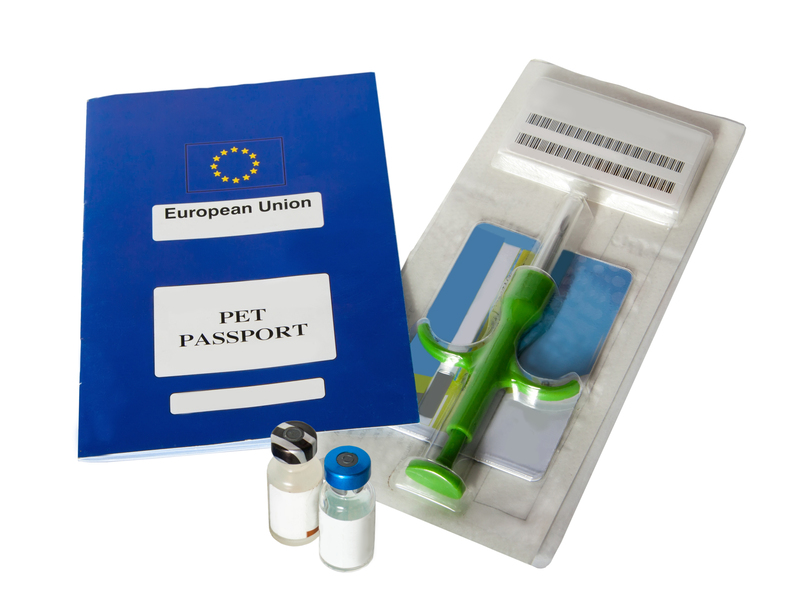Unlock Long-Term Sofa Care with Expert Solutions
Posted on 18/05/2025
Unlock Long-Term Sofa Care with Expert Solutions
Your sofa is far more than just a piece of furniture--it's an investment in comfort, functionality, and aesthetic charm for your living space. Whether you have a plush sectional, a classic leather couch, or a chic modern settee, maintaining your sofa ensures its longevity and keeps your home looking inviting year after year. Unlocking long-term sofa care requires more than the occasional vacuuming; it means embracing a suite of expert solutions and preventative strategies that protect your investment and showcase your commitment to a clean, beautiful environment.

Why Is Sofa Care Essential?
Sofas endure daily wear and tear from pets, children, guests, and the hustle and bustle of everyday life. They can accumulate dust, stains, allergens, and odors--quickly diminishing their appearance and comfort. Proper sofa maintenance not only preserves the visual appeal but also extends the lifespan of your furniture, saving you money and maintaining the health of your household. In this comprehensive guide, you'll discover effective, expert-level solutions for long-term sofa preservation and care.
- Prolongs Lifespan: Routine care prevents premature aging and breakdown of fabric and cushions.
- Maintains Cleanliness: Regular maintenance keeps dirt, allergens, and bacteria at bay.
- Retains Value: Well-maintained sofas retain their comfort and resale value for years to come.
- Enhances Comfort: A clean, supportive sofa maximizes relaxation and quality of life.
Understanding Different Sofa Materials
To successfully unlock the secrets of long-term sofa care, it's important to know the material of your upholstery. Each fabric or material requires a distinct care approach:
Fabric Sofas
These are popular for their comfort and color variety. Most fabric sofas are made from cotton, linen, microfiber, or blends. Fabric sofas need regular vacuuming, gentle spot-cleaning, and periodic deep cleaning to remain fresh and vibrant.
Leather Sofas
Leather brings an element of luxury and durability. However, it requires moisturizing to prevent cracking and must be cleaned with non-abrasive products. The right care keeps leather sofas soft and lustrous.
Synthetic Sofas
Materials like polyester or acrylic resist stains and are often easier to maintain. Synthetic sofas benefit from gentle cleaning and protection against heat and direct sunlight which can cause fading or warping.
Daily Sofa Care Tips for Lasting Results
Consistent daily care is the first line of defense in ensuring the long-term upkeep of your sofa. Here's how you can protect your investment with simple, everyday habits:
- Vacuum Regularly: Use a soft brush or upholstery attachment at least twice a week. This removes dust, crumbs, and pet hair before they penetrate fabric fibers.
- Fluff and Rotate Cushions: Rotate and plump up cushions daily to maintain their shape and prevent uneven wear.
- Limit Sunlight Exposure: Place your sofa away from direct sunlight or use curtains to minimize UV damage and fading.
- Handle Spills Immediately: Blot (don't rub) spills with a clean, dry cloth. Immediate action prevents stains from setting in.
- Enforce a No-Shoes Policy: Discourage sitting on the sofa with shoes to prevent dirt and damage.
- Keep Pets Groomed: Regularly brush pets to minimize the transfer of fur and oils to your upholstery.
Expert-Level Deep Cleaning Solutions
Even with diligent daily care, sofas need periodic deep cleaning to eliminate hidden dirt and maintain their plushness. Employing professional sofa cleaning techniques ensures a thorough rejuvenation.
DIY Deep Cleaning for Fabric Sofas
- Check the Care Label: Always follow the manufacturer's instructions. Look for cleaning codes (W, S, WS, X) to determine the best solution--water-based, solvent-based, or vacuuming only.
- Use a Steam Cleaner: For washable fabrics, a steam cleaner can effectively remove deep-seated dirt and kill dust mites.
- Spot-Clean Stains: Use a mild detergent solution or an upholstery cleaner suitable for your fabric. Test in an inconspicuous area first.
Caring for Leather Sofas
- Dust and Wipe Weekly: Use a dry or slightly damp cloth to remove dust and frequent light dirt.
- Apply Leather Conditioner: Every three to six months, nourish the leather with a good quality conditioner to keep it supple and prevent cracks.
- Avoid Harsh Chemicals: Never use bleach, ammonia, or abrasive cleaners on leather.
Deodorizing and Sanitizing
Long-term sofa freshness relies partly on odor management. Baking soda can be sprinkled on fabric sofas and vacuumed off after 20 minutes to absorb odors. For persistent smells, use an upholstery-safe disinfectant. Leather sofas benefit from specific leather deodorizers.
Pro Tips: Preventative Measures for Sofa Longevity
Unlocking lasting sofa care is as much about prevention as about maintenance. Consider these expert preventative strategies:
- Use Sofa Covers or Throws: Removable and washable covers provide a barrier against spills, stains, and pet hair.
- Regularly Check for Loose Threads or Tears: Address small issues promptly to prevent them from becoming bigger problems.
- Reposition Furniture Periodically: Move your sofa occasionally to avoid excessive wear in one area and extend the life of your floors, too.
- Invest in Professional Cleaning: Once or twice a year, hire a sofa cleaning professional. Their expertise and equipment can rejuvenate and revitalize even heavily used sofas.
- Apply Fabric or Leather Protection: After cleaning, use a fabric protector spray or leather treatment to shield the surface from future stains and grime.
Dealing With Common Sofa Problems
Stains and Spills
Even with the best intentions, accidents happen. Here's how to unlock expert-level stain removal:
- Water-Based Stains: Blot with a clean cloth and mild detergent. Avoid oversaturating the fabric.
- Oil-Based Stains: Sprinkle baking soda to absorb oils, vacuum, then gently clean with dish soap solution.
- Pet Accidents: Use an enzymatic cleaner to break down organic stains and odors.
- Ink or Dye Transfer: Rubbing alcohol applied with a cotton swab can lift ink stains--always test in a hidden spot first.
Note: Always blot and avoid rubbing, which drives stains deeper into fibers.
Sagging Sofas
Over time, sofa cushions can lose shape and support. To restore firmness:
- Rotate and flip cushions regularly.
- Add new foam inserts or supportive upholstery batting inside the cushion covers.
- For severe sagging, consult a professional upholsterer for repairs.
Pet Hair and Dander
Minimize pet hair with lint rollers, vacuuming, or pet-specific upholstery brushes. Wash removable covers often and consider anti-static sprays that repel fur. Regularly bathe and groom your pets.
Seasonal and Annual Sofa Care
Much like spring cleaning for your home, your sofa benefits from seasonal deep cleans and inspections:
- Spring/Summer: Open windows to air out upholstery, vacuum thoroughly, and address any mustiness from winter months.
- Autumn/Winter: Condition leather before low humidity dries it out. Use heavier throws and covers for protection against increased indoor activity.
- Annual Check-Ups: Once a year, schedule professional cleaning and an inspection to detect early damage or wear.
When to Call the Sofa Care Experts
DIY care is crucial, but there are times when only professional expertise will do:
- Persistent or Old Stains: If standard cleaning doesn't work, pros have specialized tools for stain extraction.
- Mold or Mildew: Signs of mold require immediate expert attention to protect your health and save your sofa.
- Major Structural Issues: Broken frames, severe sagging, or detached fabrics merit professional upholstery services.
- Allergy Concerns: For allergy sufferers, annual professional sofa sanitization can drastically improve indoor air quality.
Eco-Friendly Sofa Care Solutions
If you're environmentally conscious, consider green alternatives for sofa maintenance:
- Use natural cleaning products like vinegar, baking soda, and plant-based soaps.
- Avoid harsh chemicals that harm indoor air and the planet.
- Choose microfiber cloths that are reusable and gentle on fabrics.
- Hire cleaning services that use eco-friendly methods.
The Ultimate Checklist for Long-Term Sofa Maintenance
To truly unlock long-term sofa care, make this comprehensive checklist part of your household routine:
- Weekly: Vacuum, fluff cushions, quick spot clean, dust arms & backrests
- Monthly: Rotate cushions, check for loose stitches, apply leather/fabric protectant
- Seasonally: Deep clean using steam or professional service, address odors, condition leather
- Annually: Professional inspection and deep cleaning, structural repairs, replace covers if necessary

Frequently Asked Questions on Sofa Care
How often should a sofa be professionally cleaned?
For the best results and extended sofa life, aim for professional cleaning at least once a year. For households with pets, kids, or allergies, every 6 months is even better.
Can I use household cleaning products on my sofa?
Always check the sofa's care label first. Many household products can damage fabrics or leather. Choose cleaners designed for upholstery to ensure safety and effectiveness.
What's the best way to prevent sofa fading?
Limit direct sunlight, apply UV protection sprays, and use throws to shield seat cushions. Rearrange furniture occasionally to ensure even wear.
How do I remove stubborn odors?
Besides baking soda, ensure regular deep cleaning, and use fabric fresheners. For persistent smells, professional ozone or steam cleaning can help.
Unlock the Benefits of Long-Term Sofa Care
By embracing these expert strategies and integrating them into your cleaning regimen, you can ensure that your sofa remains comfortable, attractive, and functional for years. Long-term sofa care is an achievable goal--protect your investment, enhance your home's hygiene, and create a welcoming environment for everyone. With these expert solutions, your sofa will stand the test of time, continuing to provide comfort and style through all of life's moments.



